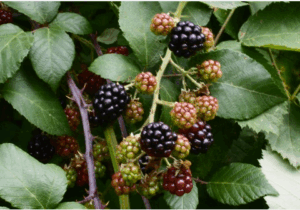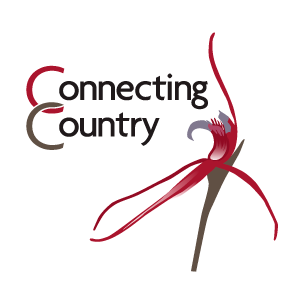Weed of the Month: Blackberry
Posted on 16 June, 2025 by Bonnie Humphreys
Most people can recognise a blackberry plant, but did you know that what we consider to be Blackberry consists of around 26 different species we refer to as an aggregate – Rubus fruticosus agg. These plants were first imported to Australia in the 1830s for gardens, as hedgerows, and as food plants. In the 1850s they were recommended to be used for erosion control along creeks but by the 1880s, they were recognised as weeds. Harbouring rabbits and reducing the quality of farm land they were listed as noxious in Victoria in 1894.
Blackberry originates from Europe, North America and Asia. It is a prickly woody shrub which sends out long woody canes that take root and spread. It also grows from roots and root fragments, and from seed readily eaten and spread by many animals including birds and foxes. It effectively grows in sun and shade and can successfully compete and overtake existing vegetation. Blackberrys usually have a period of dormancy throughout the year, and in our area, this usually occurs over winter.
It is listed under the Catchment and Land Management Act 1994 as ‘regionally controlled’ which means that landholders and managers have ‘a responsibility to prevent the growth and spread of this plant’.
It is also considered a weed of national significance (WONS) which means that it is considered noxious across the whole of Australia. There is a taskforce especially formed to deal with community education and the control of this species across Victoria – Click here
Herbicide application is the most common form of control, with an integrated approach usually most successful. Manual removal is limited to very specific situations due to the plants ability to regrow from most parts of the plant and in particular root fragments. Spraying and slashing may be used for extensive infestations, but will require follow up. As it is a woody weed the ‘cut and paint’ method of control is very effective. Any herbicide application should only occur when the plant is healthy and actively growing.
Further information can be found within the Blackberry Control Manual – Click here
Or on the Castlemaine Field Naturalists Website – Click here
The Weed of Month article is a segment from Connecting Country’s ‘Partnerships Against Pests’ project funded by Agriculture Victoria in 2024-25. Through this program, Connecting Country is working closely with local community groups, such as Landcare, to raise awareness of local pest plant and animal issues, with the aim to empower community with the skills to address these threats. The project includes seasonal awareness campaigns around key pest issues as well as workshops, and market stalls across the region.
Photos: Castlemaine Flora website







Leave a Reply